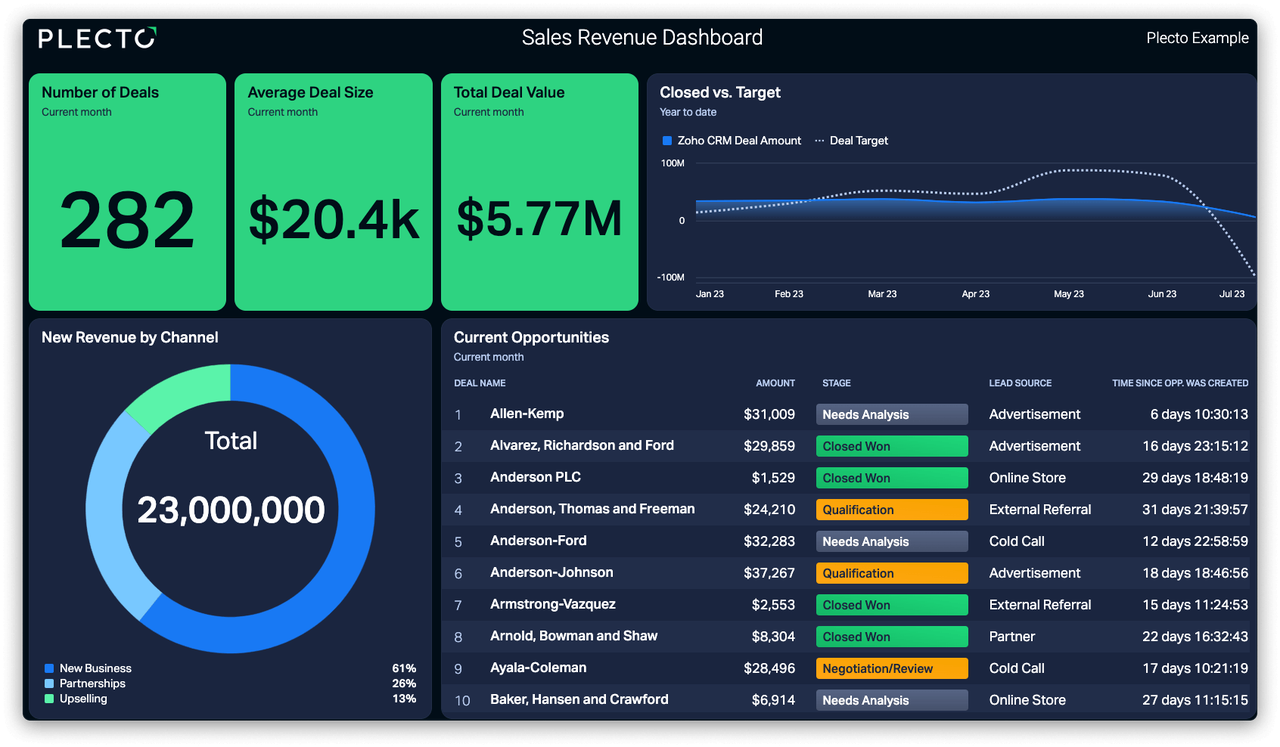It’s high stakes when it comes to identifying and using the best sales tactics. Thanks to unprecedented access to online information, today’s buyers have often narrowed down their choices and completed up to 90% of their buyer journey by the time they first interact with a salesperson.
In 2024, the best sales tactics are consultative and buyer-focused with an emphasis on providing information, building trust, and finding solutions. Read on to discover the five best sales tactics to help you meet these demands, find warm leads, build rapport – and close more deals!
What are sales tactics?
Sales is a trust-based endeavor. Sales tactics are the methods and strategies that salespeople use to build their prospects’ trust while helping them feel confident that they’re making the right choice. Successful selling requires a mix of art and science – finesse and strategy. The most effective salespeople combine these elements to create an approach that builds trust, moves prospects through the sales funnel, closes the right deals, and keeps customers satisfied over the long haul.
5 of the Best Sales Tactics for Successful Selling
Whether you’re selling B2B or B2C, here are five of the best sales tactics to help you generate warm leads, meet today's buyers at their level, and make the sale.
1. Understand your existing customers to acquire new customers
In quota-driven fields like sales, it’s easy to devote all of your attention to prospecting and closing new business. But there’s a wealth of information to be gleaned from understanding how your product benefits your existing customers – all of which can help you ensure that your communication resonates with new prospects. Reaching out to past customers is also an excellent way to build relationships that can lead to future upsells. Dig into why they chose your product instead of an alternative and what their experience has been since buying it. Use this information to personalize your messaging to better address each prospect's needs with concrete examples of real-world applications that position your product as their best choice.
Don’t forget your company’s social media platforms. These are an excellent opportunity to monitor customer feedback “in the wild” to better understand your customers’ impressions, experiences, and needs – which can help you sharpen your personas and tailor your sales tactics. If your company uses customer relationship managers post-sale, talking to them can help you identify your ideal customer profiles as well as where your product excels and where it might come up short. This will help you to pursue the right leads, be honest about what your product can and can’t do, and improve your chances of long-term customer satisfaction and positive word of mouth.
2. Find leads on social media
Prospecting is a huge part of outbound sales, yet many sales reps overlook social media platforms as possible sources of leads. If you’re overlooking this potential goldmine, it’s likely that your competitors are too – here’s your chance to stay one step ahead! LinkedIn groups are one of social media’s best networking opportunities for sales reps selling B2B products, while Facebook groups and Twitter can be good hunting grounds for B2C leads.
Engaging in groups where you’re likely to encounter your ideal customers can put you in instant contact with warm leads while giving you a fly-on-the-wall perspective of their pain points and needs. Use hashtags on multiple platforms to discover prospects looking for solutions in your niche – then jump in, offering advice that highlights how your product could help them. To increase your exposure, comment on other people’s posts and share articles in your feed – but slow and steady wins the race. Don’t jump the gun by immediately sending a DM to everyone who interacts with you – instead, reply to each comment and slowly build up your connections. Content marketing, such as blog posts and whitepapers, works particularly well in social media contexts for both B2B and B2C products because it provides information without coming off like a sales pitch.
It's also important that your company is present and active on social media. An active social media presence can build credibility while raising product awareness. Recent surveys show that the majority of B2C customers expect to interact with companies via their preferred channels, which are often social media platforms. Empirical data from LinkedIn suggests that over 50% of sales quotas in many industries are comprised of “social selling” or social media influences – amounting to 45-50% more new business and retention rates of 80-90%. If your company isn’t already working the social media angle, it’s time to schedule a meeting with marketing.

3. Listen more than you talk
Negative stereotypes about salespeople abound, and today’s consumers don’t respond to pushy tactics or grandiose claims. The future of sales is in consultative selling, and the cornerstone of that is listening more than you talk. Practicing active listening can improve your chances of uncovering clues or information that can help you tailor your pitch while building rapport by making the prospect feel heard and understood. Asking questions and paraphrasing what the prospect has just told you can improve your understanding of their requirements while uncovering underlying needs that they might not even be aware of. With this approach, prospects will likely feel relaxed enough to mention one of your competitors. When they do, listen for clues about what they like and don’t like about the competing solution. Tuck that information away for future use or use it as an opportunity to explain how your company is different or why yours is a unique or better solution – and remember, never criticize your competitors.
Build your first dashboard.
Start your 14-day free trial today
4. Make liberal use of quantitative data in your pitch – and bring in the experts
To truly give prospects a taste of what your product could do for them, paint a picture using quantitative data. Today’s leads are probably already familiar with your product’s features by the first time you speak with them. So instead of rehashing what they already know, tell a compelling story using targeted case studies and other information that demonstrates what your product has done for other customers with similar needs. Consider creating a sales enablement program that includes a content library so you’ll have instant access to relevant and up-to-date information for your pitches. This article is chock full of tips about how to create a sales enablement program from scratch.
True consultative selling is a team effort. Involving resources from outside the sales department can add value to the sales process by demonstrating that the company is invested in the prospect’s success – and has the expertise necessary to deliver on its promises. For example, if the prospect seems hung up on the product’s technical aspects, bring in a lead developer or engineer to talk shop. Meeting prospects on their level is a surefire way to build rapport and trust. While it might involve more upfront effort, it’s likely to pay dividends.

5. Ask your existing customers for referrals
If you aren’t asking for referrals, you’re throwing away enormous potential! Word-of-mouth recommendations can be a bonanza of warm leads – and these leads generally convert more quickly and frequently than non-referred leads. Research shows that around 47% of top-performing salespeople consistently ask for referrals, making it all the more shocking that almost 60% overall say they ask for referrals less than once a month. Grab your share of this untapped potential by providing outstanding service, and then asking one simple question: “Do you know of anyone who might be interested in this product?”
Particularly in B2C sales, offering an incentive (e.g., gift cards, discounts) for successful referrals can improve the quality of leads. To further improve your chances of getting quality referrals, let the customer use the product for a month or two. Check in periodically to develop the relationship and see how the product is working out for them. Once you’re confident that it’s a good fit, ask for a referral. In other words, it’s crucial to take your time and only ask for a referral after you’ve had the chance to assess whether or not your product has lived up to the customer's expectations. Asking for a referral too soon can undermine all of your relationship-building efforts by giving the impression that you’re only interested in meeting your sales quota.
Use Plecto to Help Evaluate Your Sales Tactics
Once you’ve put these sales tactics into practice, go one step further by visualizing your sales performance and related KPIs on real-time dashboards. To effectively evaluate whether you’re using the best sales tactics to target your ideal customers, make sure to choose the right KPIs. If you’re unsure of which KPIs to choose, check out these 21 sales KPIs you should be tracking, these 10 outbound sales KPIs to track, and these 10 inbound sales KPIs your team really needs.




